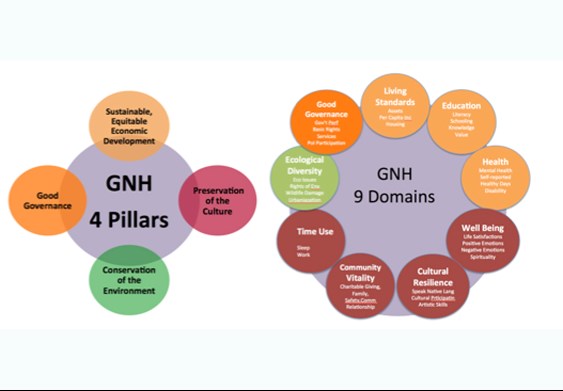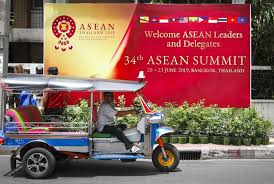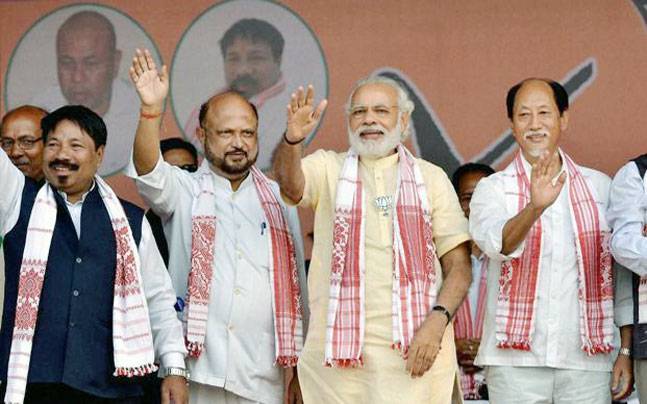Hong Kong (CNN Business)The biggest television broadcaster in Hong Kong is cutting staff as the city plunges into recession and its political crisis continues with “no sign of abating,” the company’s CEO told workers this week.
Economy
Dressed in bandhgala and dhoti, Abhijit Banerjee Esther Duflo in a blue sari and Michael Kremmar in Nobel Prize 2019 ceremony
Abhijit Banerjee is the second Indian after Amartya Sen to win the Nobel prize in Economics. Banerjee, Esther Duflo and Michael Kremmer together helped obtain reliable answers about the best ways to fight global poverty.
Clad in a bandhgala punjabi and a dhoti, as Abhijit Vinayak
Banerjee stepped onto the dais at Stockholm Concert Hall in Sweden on
Tuesday afternoon — along with his wife Esther Duflo and colleague
Michael Kremmer — to receive the Nobel Prize for their research in
economics, the city, too, rose in unison in front of their TV sets just like the
hundreds of delegates at Konserthuset, Stockholm, some 6,750kms away.
“This is what sets him apart. At the grandest stage of all, he is holding up
Indian tradition. Apart from what he has achieved in his field, these small
gestures set him apart from others and make us more proud of him. It was
a wonderful moment for us, watching our childhood friend, Jhima, receive
the honour and write history in his own right,” said Bappa Sen.
Dressed in a bandhgala jacket and dhoti, Indian-American Economist Abhijit Banerjee received the Nobel Prize in Economics in Sweden for his “experimental approach to alleviating global poverty.” Esther Duflo, who shared the prize, was dressed in a blue sari. Their colleague Michael Kremmer, meanwhile, wore a suit.
The award carries a purse of 9 million Swedish krona (about Rs 6.5 crore) to be shared among the three winners.
Born in Mumbai, Banerjee is the second Indian after Amartya Sen to win the Nobel prize in Economics. Like Sen, Banerjee, too, is an alumnus of Presidency College, now Presidency University.
While the couple, Banerjee and Duflo, are professors in the department of economics at the Massachusetts Institute of Technology (MIT), Kremer is a professor in the department of economics at Harvard University.
Watch Abhijit Banerjee, Esther Duflo and Michael Kremer receive their medals and diplomas at the #NobelPrize award ceremony today. Congratulations!
They were awarded the 2019 Prize in Economic Sciences “for their experimental approach to alleviating global poverty.”
The trio’s research has, over the last two decades, helped obtain reliable answers about the best ways to fight global poverty. Their work has revolved around identifying “low-hanging fruits”, which are often the most effective interventions in improving outcomes in health and education for the poor.
Their work — breaking down the problem of global poverty into a number of smaller and more precise questions at individual and group level — has redefined research in development economics over the last 20 years. “This new research is now delivering a steady flow of concrete results,” stated the popular science background paper made available by the Academy.
Days before the award, Banerjee had blamed “recentralisation” as among the reasons compounding India’s economic slowdown and had advised the government to strengthen institutions, removing interference by the Prime Minister’s Office (PMO) and withdraw cases “that look obviously politically motivated”. Incidentally, he was also one of the few faces that the Congress tapped ahead of the Lok Sabha elections this year.
New Delhi:The cabinet committee on economic affairs (CCEA) on Wednesday cleared one of the government’s largest asset-sale exercises involving five companies, including the privatization of Bharat Petroleum Corp. Ltd (BPCL) and Shipping Corp. of India (SCI).
Other companies in which the government will sell stakes include Container Corp, of India Ltd (Concor), THDC India Ltd (THDC) and North Eastern Electric Power Corp. Ltd (Neepco). As part of a consolidation exercise of the state run hydropower firms, the GoI will sell its 74.23% and 100% stake in THDC and Neepco respectively along with management control to state run India’s largest power generation company-NTPC Ltd.
In 2014, a concept paper on the possibility of a merger of all state-owned hydroelectric companies recommended a phased approach, starting with North Eastern Electric Power Corp Ltd (Neepco) to be combined with NHPC Ltd, followed by THDC India Ltd and SJVN Ltd.
Also, the government will sell its 63.75% and 30.8% stake share in Shipping Corporation of India and Container Corporation of India respectively along with management control to a strategic buyer.
In the case of BPCL, the government will sell its 53.29% stake to a strategic buyer, ceding management control, finance minister Nirmala Sitharaman told reporters after the CCEA meeting on Wednesday. The proposed sale will, however, exclude the strategic Numaligarh Refinery Ltd (NRL) in Assam, which will be later sold to another state-run firm, given India’s need to secure fuel supplies for security forces in the north-east.
“A carve-out has been made of NRL,” she said. “It will be moved out of BPCL and will be retained by a government-owned firm, before disinvestment.”
A strategic investor will get access to BPCL’s refining capacity of 37 million tonnes per annum and around 15,000 retail outlets in the world’s third largest oil consuming nation. The company reported a profit of ₹7,132 crore on sales of ₹3.37 trillion in the year ended 31 March.
As part of a consolidation of state-run hydropower companies, the government will sell its 74.23% and 100% stake in THDC and Neepco respectively to government-controlled NTPC Ltd, India’s largest power producer.
Selling these assets will be key to the government meeting its ambitious target of generating ₹1.05 trillion from asset sales in the current fiscal year. The government’s decision to slash corporate taxes to boost the economy and attract investments has left Sitharaman struggling to meet the year’s fiscal deficit target of 3.3% despite receiving a ₹1.76 trillion windfall from the Reserve Bank of India.
The CCEA also approved the sale of the government’s 63.75% and 30.8% stake in SCI and Concor respectively, along with management control, to a strategic buyer.
The aggressive asset sales plan comes amid Asia’s third-largest economy growing at the slowest pace in six years in the June quarter.
The decision on BPCL comes in the backdrop of the government also opening up the fuel retail market by lowering the entry barrier and allowing all companies with a net worth of ₹250 crore to set up outlets. The earlier rules required prior investments of ₹2,000 crore for companies to enter the fuel retail segment, which many believed, favoured state-run fuel retailers, including Indian Oil Corp. Ltd, BPCL and Hindustan Petroleum Corp. Ltd. Private sector oil companies, such as Reliance Industries Ltd, Essar Oil Ltd and Shell India, have some presence in the fuel retailing space that is dominated by the state-run firms.
In recent times, the Indian energy space has been witnessing growing interest from investors. While Adani Gas Ltd and Total SA plan to bld a gas fuel retail network of 1,500 outlets along highways, the world’s largest oil producer, Saudi Arabian Oil Co. (Saudi Aramco), is also considering entering the fuel retailing market in India. That apart, global energy majors, such as Rosneft, Kuwait Petroleum, ExxonMobil, Shell and Abu Dhabi National Oil Co. are planning to acquire the government’s stake in BPCL.
State-run Oil and Natural Gas Corp. (ONGC), which accounts for 73% of India’s oil and gas output, acquired the government’s stake in HPCL for ₹36,915 crore last year.
The government has already decided to privatize national carrier Air India and shut down state-owned trading companies in a signal that it will exit companies in non-strategic sectors.
Also, the government has decided to merge its twin state-run telecom companies—Bharat Sanchar Nigam Ltd and Mahanagar Telecom Nigam Ltd—in an effort to turn around the money-losing firms.
The strategy would also see the government look at ways to exploit the vast land assets of the two companies. In March this year, Power Finance Corp Ltd (PFC) completed the purchase of a controlling stake in state-run peer REC Ltd to create an $80-billion lending giant by assets. PFC paid ₹14,500 crore to the Union government to buy a 52.63% stake in REC.
The Cabinet also approved the food ministry’s decision to import 120,000 tonnes of onions to improve the key kitchen staple’s domestic availability.
People and organisations in many countries around the world claim to have adopted Bhutan’s human development vision of Gross National Happiness (GNH).
However, what they actually portray is different people’s perceptions of GNH. Some are philosophical, some are well researched academic constructions, while the others are spaced-out theories.
GNH has been described as an esoteric philosophy, an inspiring concept, a developmental goal, a measure of development, a wake-up call, and so on.
It is also being criticised as a platform for ambitious politicians, a mere catchphrase, an empty promise, meaningless platitudes, a purely intellectual concept, as well as an academic redundancy.
If confusion is truly the beginning of wisdom, all these are ‘wonderful’. I, too, would like to add to the confusion by sharing my understanding of GNH, by attempting some responses and clarifications to ideas that are being exchanged.
What exactly is ‘Happiness’?
To talk about GNH, I believe that we have to first define what happiness is.
I know that the world’s greatest minds have been trying to define happiness for centuries but I have my own idea of a GNH perspective on happiness.
The happiness in GNH is not fun, pleasure, thrill, excitement – or any other fleeting emotions, it is the deeper and permanent sense of contentment that we consciously or, in our sub-conscience, seek.
Have we achieved GNH in Bhutan? The answer is ‘No’. But has GNH had an impact on Bhutanese society? Yes.
Everyone who has visited Bhutan senses a different atmosphere from the moment he or she arrives. I believe that this sense comes from the values that have been nurtured over the centuries.
Today, we are calling it GNH, therefore, I offer my understanding of GNH as it exists today.
I see GNH in four forms – the intuitive, the intellectual, the responsibility and the emerging global.
The intuitive
First of all, I see intuitive GNH values in past generations of Bhutanese who had strong mutual understanding and enjoyed interdependent existence as members of small rural communities.
The village astrologer, the lay monk, the lead singer, the carpenter, the arrow maker, the elders and the youth, all of them had their own responsibilities.
The values, drawn from Buddhist teachings, from the experience and wisdom of our ancestors and from the very practical needs of a subsistence farming lifestyle, inculcated a reverence for an interdependent existence with all life forms, or all sentient beings.
Some examples of these are seen in the reluctance to hunt and fish (both of which are banned in the country), the sometimes frustrating tendency to be less ‘productive’ to avoid hurting or upsetting someone, and putting up with the cacophony of an unruly stray dog population. To put it simply, people basically identified with their own priorities in life.
In the 1980s, farmers of one village were taught successfully to do a double crop of paddy, meaning that they doubled their rice production that year.
However, they refused to do it the following year because, as one farmer said, “We did not have time to play archery, to enjoy our festivals or to bask in the sun.”
The philosophical
Another perception level I see is the attempt to define, explain and measure GNH, along with the academic construction of the concept.

The four pillars and nine domains of GNH
As discussed earlier, the best accepted definition of happiness is the abiding sense of inter-relatedness with all life forms and of contentment that lies within the self.
This is related to the happiness that Buddhists seek from the practice of meditation.
In one understanding of GNH as a development vision, a representative of the UN Development Programme (UNDP) described it as a much more advanced concept of the Human Development Index that the UNDP has been refining.
The responsibility
This takes me to the third perception: GNH as a government responsibility.
As discussed, I think the definition of happiness as the abiding sense of contentment as well as GNH as a government responsibility make basic sense, although the translation of these into policy, legislation and prioritised activities is very much still a work in progress.
In other words, we may agree on goals, values, and responsibilities, but differ sharply on the best strategies to achieve these goals.
And yet, it is the recognition that GNH must be the basis of mainstream policy thinking that sets Bhutan apart from some countries that have expressed interest in harnessing the values of GNH.
As we have seen during the GNH conferences in Thailand, Brazil, and Canada, some people doing good work among their communities, such as the NGOs and civil society organisations, thought that they have found an identity in GNH.
In Bhutan, however, the four pillars and nine domains of GNH have given politicians and bureaucrats some idea of national priorities.
This is useful because public servants do not intellectualise policy but make decisions that have an impact on all citizens.
The international discourse
The fourth perception level is the “internationalisation” of the GNH discussion.

(Source: Chencho Dorji)
Bhutan has certainly not worked out the solutions to the world’s problems, but I think we have opened up an amazing conversation and we need to give this conversation coherence and direction.
The concept of GNH, even partially understood, excites and inspires people. After five international conferences on GNH and the April 2 meeting in New York, one criticism at home has been – stop preaching GNH overseas and make it work in Bhutan.
This is a resounding example of the need for clarity in GNH thinking and understanding. Here, I emphasise the point that we are not preaching to anyone, rather, we ourselves are learning.
There is a vast amount of research, analysis and experimentation done on GNH-related issues such as sustainability, well-being, climate change and much more, by intellectuals including Nobel laureates, by universities and institutions and by civil societies.
Bhutan must learn from them to in order to deepen its own understanding of GNH.
International discourse can only benefit Bhutan because we ourselves do not have the capacity to undertake the necessary research and analysis required to implement the tenets of GNH fully at home.
In conclusion, there is a growing understanding of, and even fear that the human population, driven by the values of GDP, is literally consuming the earth.
That is why GNH is a pun on GDP which used to be known as Gross National Product. The loud message is that human development needs a higher goal, that is, beyond GDP.
Leaders from 16 Asia-Pacific nations including Japan, China and India have effectively given up on achieving the goal of finalising their free trade deal by the end of this year, according to a joint statement issued on Monday.
In the statement released after their summit, the leaders of the Regional Comprehensive Economic Partnership (RCEP) pledged to sign an agreement on creating the world’s largest free trade area in 2020, indicating the countries will continue their negotiations.
“We noted 15 RCEP Participating Countries have concluded text-based negotiations for all 20 chapters and essentially all their market access issues; and tasked legal scrubbing by them to commence for signing in 2020,” the statement said.
But “India has significant outstanding issues, which remain unsolved,” it added, suggesting that the South Asian nation and other RCEP members failed to reach agreement in key fields such as tariffs.
India is believed to be reluctant to lower its trade barriers, as the country claims that it has suffered massive and chronic trade deficits with China for many years.
If the free trade area — which would cover half of the world’s population — is put into practice, trade and investment activities among RCEP nations would intensify on the back of measures like the elimination and reduction of tariffs.
In India, however, there is concern that the deal would result in an influx of cheap agricultural and industrial products, including smartphones, from China, further increasing the trade surplus of the world’s second-biggest economy, sources said.
Covering a third of the world economy, RCEP has a history of missed deadlines with varying degrees of ambition among the 16 members. Talks began in 2013 with the initial goal of wrapping them up in 2015.
RCEP brings together Australia, China, India, Japan, South Korea and New Zealand, as well as the Asean states — Brunei, Cambodia, Indonesia, Laos, Malaysia, Myanmar, the Philippines, Singapore, Thailand and Vietnam.
ASEAN CIVIL groups and representatives of people’s organisations will once again be denied an interface meeting with leaders during the 34th summit in Bangkok this weekend, as they failed to convene a parallel meeting, Asean officials and organisers said.
The Asean Civil Society and People Forum (ACSC/APF) was supposed to hold their meeting in the middle of this month to finalise issues and demands to be exchanged with leaders during the summit. The meeting was delayed until September.
Though they will not be permitted to discuss issues with leaders of Asean nations, the groups may be allowed to meet with senior officials of Asean, Foreign Ministry director-general of Asean Affairs, Suriya Chindawongse, said.
Representatives of three groups – Asean Inter-Parliamentary Assembly (AIPA), Asean Youth, and Asean Business Advisory Council (ABAC) – will meet with leaders on June 22.
The ACSC/APF has not managed to have an interface dialogue with leaders for three consecutive years. The last meeting between the civil society groups and Asean leaders took place during Malaysia’s chairmanship in 2015. At last year’s Asean meeting with Singapore as chair, a meeting with the People Forum was restricted financially and isolated from the leaders’ summit.
As the host country, Thailand is tasked with initiating the interface meetings between the civil society sector and leaders. It would try its best to arrange such a meeting during another summit in November, a Thai Foreign Ministry official said on condition of anonymity.
Members of an Explosive Ordnance Disposal squad install a bomb detector gate at the venue of the 34th ASEAN Summit in Bangkok, Thailand, 19 June 2019. // EPA-EFE PHOTO
Chalida Tajaroensak, director of the People Empower Foundation (PEF), one of the 2019 ACSC/APF steering committee members, said the failure this time reflected the “controlled partnership” preferences of leaders, in which they decided to instead meet with self-appointed representatives and business groups.
Regarding the summit’s refusal to meet with the group, Chalida said their organising committee had submitted the names of representatives to the Senior Officials Meeting for the Asean Socio-Cultural Community.
She said the member states failed to reach a consensus to meet with the civil society organisations (CSOs). Only the delegates of Thailand, Malaysia and Indonesia supported the proposed interface, while two countries rejected it and the rest were silent.
Still, with another opportunity still possible at the second summit in November, Chalida said the CSOs need to rethink their engagement strategy
“The CSOs must review how to be a partner with the states, whether street protests to pressure, or [alternatively] diplomacy, would work to effectively convey the people’s demands to the governments,” Chalida said. “In order to bridge the barrier, they must shift to people’s diplomacy.”
There are different degrees of support and confrontation between the states and CSOs in the many Asean countries, she said. Regional cross-cutting talks among the CSOs are needed in order to craft a strategy to deal with the states on the Asean stage.
There is a wide spectrum among Asean CSOs in terms of their agenda, stance and affiliations. Each state has its own way of dealing with the civil sector, including implementing registration to establish its own civil groups, known as government-organised non-governmental organisation.
The national flag of Myanmar in front of a large poster welcoming ASEAN leaders to the 34th ASEAN Summit in Bangkok, Thailand, 19 June 2019. // EPA-EFE PHOTORepresentatives of three groups – Debby Stohard from the Alternative Asean Network for Burma, an NGO working on democracy issues in Myanmar, criticised the state’s exclusion of its citizens. She noted that people in Cambodia, Vietnam and other countries are judicially and physically harassed when they speak out about unsustainable development or express opinions on the internet.
“We ask Asean governments and leaders: please check the dictionary for the meaning of ‘partnership’ – because they have not been behaving in partnership with the citizens of this region”, said Stohard in a public panel.
Rachel Arinii Judhistari, Asean programme manager of Forum-Asia, one of the ACSC/APF steering committee members, called for Asean nations to truly respect the rights of people in responding to its “people-centred” principle.
“This year the AICHR [Asean Intergovernmental Commission on Human Rights] will turn 10. Use this anniversary to advance a ‘people-centred’ Asean, where the rights of the people of Southeast Asia will be respected. “Asean aspires to be people-centred, as it has stated in its Asean 2025 blueprint. However, in reality, many CSOs are facing curtailment of civic space in their countries, which is contributing to the silencing of dissenting voices.”
Amazon founder and CEO Jeff Bezos has lost the title as the world’s richest man, paving the way for tenacious Bill Gates to grab the top spot after Amazon’s lacklustre Q3 results resulted in Mr Bezos losing nearly $7 billion in stock value.
Amazon shares fell 7 per cent in after-hours trading on Thursday, leaving Mr Bezos down to $103.9 billion.
Microsoft co-founder Bill Gates is currently worth $105.7 billion.
Mr Bezos ended Mr Gates’ 24-year run as the richest man in 2018 and became the first man on earth with a net worth of $160 billion.
Play Video1m 24s

Amazon CEO says tabloid owner blackmailed him
Chief Executive of Amazon Jeff Bezos posts a blog saying the parent company of tabloid The National Enquirer tried to blackmail him with the threat of publishing “intimate photos.” Ryan Brooks reports.
Amazon reported a 26 per cent drop in net income in its third quarter, its first profit decline since 2017, reports Forbes.
In after-hours trading, Amazon dropped nearly 9 per cent to $1,624 per share.
Gates debuted on Forbes’ first ever billionaire list in 1987 with a net worth of $1.25 billion.
Mr Bezos first joined The Forbes 400 list of richest Americans in 1998, one year after Amazon went public, with a net worth of $1.6 billion, the report added.10 COMMENTS
The Bezos couple finalised their divorce in April in what was reported as the biggest divorce settlement in history, entitling MacKenzie Bezos to Jeff Bezos’ stocks worth around $36 billion.
NEW DELHI: Sandwiched between the World Bank and International Monetary Fund reducing India’s FY20 growth estimates was the Nobel Economics Prize for IndianAmerican Abhijit Banerjee — who shared the award with Esther Duflo and Michael Kremer
— and the media interaction following the Nobel announcement in which Banerjee’s key observation on India’s economy was that it’s in a “tailspin” and “doing very badly”.
The government’s main focus has to be on reviving demand, the Nobel Laureate said, responding to questions on India’s economy, adding that worries about monetary balance should take a back seat. “The Indian economy is going into a tailspin; it is the time when you don’t worry so muchabout monetary stability and you worry a little bit more demand,” Banerjee said at a press conference at the Massachusetts Institute of Technology.
“I think demand is a huge problem right now in the economy.”
‘Fight Over Data’ He said the country’s economy is “doing very badly” even as the government has started to recognise that there’s a problem. “There is an enormous fight going on in India about which data is right and the government has a particular view…all data that is inconvenient to it is wrong,” Banerjee said.
“But, nonetheless…I think even the government is increasingly recognising that there is a problem. So, the economy is slowing very fast.
How fast, we don’t know — there is this dispute about data — but I think fast.” Referring to the numbers put out by the National Sample Survey, which come out every 1.5 years and give estimates about the average
consumption in urban and rural areas, he said, “…we see in that…between 2014-15 and 2017-18, that number (consumption figure) has
slightly gone down. And that’s the first time such a thing has happened in many, many years.
So, that’s a very glaring warning sign.”
The government has a large deficit but right now it’s sort of at least aiming to please everybody by pretending to hold to some budgetary
targets and monetary targets, Banerjee said.
He said he does not know exactly what to do. “That’s a statement not about what will work in the future but about what’s going on
now-…that I’m entitled to have an opinion about,” he said.
Both the Bank and the Fund, in commentary alongside their downsized growth estimates, have said the main policy challenge for the
country is to address the sources of softening private consumption as well as address problems behind weak investment sentiments.
Finance minister Nirmala Sitharaman had last week evaded a direct reply to a question on whether the government accepts there is an
economic slowdown, and had said the government is giving relief to all sectors which need help.
Over the last one month, the government has announced several measures, including reduction in corporate tax rates and asking banksto organise loan disbursals. The government has said disbursals crossed Rs 80,000 crore in nine days. Reserve Bank of India has cumulatively lowered the repo rate, or the rate at which it lends money to commercial banks, by 135 basis points since January with the latest 25 bps cut coming on October 4.
The central bank has also slashed its growth forecast for the country to 6.1% for 2019-20 from the 6.9% forecast in August, noting that the “continuing slowdown warrants intensified efforts to restore the growth momentum”.
India’s biggest private oil refiner Reliance Industries has resumed crude imports from crisis-hit Venezuela, using diesel exports to pay for them under a barter system that the company said Tuesday complies with US sanctions.
The Mumbai-based company owned by Asia’s richest man Mukesh Ambani was forced to cap crude imports from the South American country in March following pressure from the United States.
It also stopped exporting diluents needed to process thick Venezuelan crude to the country.
But under the terms of the barter arrangement, the energy-to-telecoms conglomerate has resumed crude imports from the Latin American country, Reliance spokesperson Tushar Pania told AFP.
The deal will help ease Venezuela’s inventories after US sanctions left its state-owned oil company PDVSA with huge volumes of unsold crude.
“Reliance Industries is exporting diesel and importing crude oil from Venezuela in a barter arrangement,” Pania said.
“This is in compliance with US sanctions and Reliance is confident of adhering to them,” he added, declining to say when the company had resumed the shipments.
Venezuela — a once-rich oil-producing nation — is in the grip of an economic crisis and a political standoff between President Nicolas Maduro’s government and opposition leader Juan Guaido.
The situation has worsened with successive rounds of US sanctions against Maduro’s government, including steps that have severely curbed its oil exports.
PetroWatch editor Madhu Nainan told AFP the barter agreement was “a win-win situation for both as Venezuela is battered with crippling sanctions while Reliance aims to boost its profitability”.
“With this barter deal, Reliance can procure cheap crude… which will help their refining margins.”
Refining margins are a key profitability gauge for Reliance, which operates the world’s biggest refining complex in Gujarat state.
India became the top importer of crude from Venezuela in February after US President Donald Trump issued a de facto ban on imports.
In addition to Reliance, Nayara Energy — a Mumbai-based company that is partly owned by Russia’s Rosneft — is also a buyer of Venezuelan crude.(Agencies)











